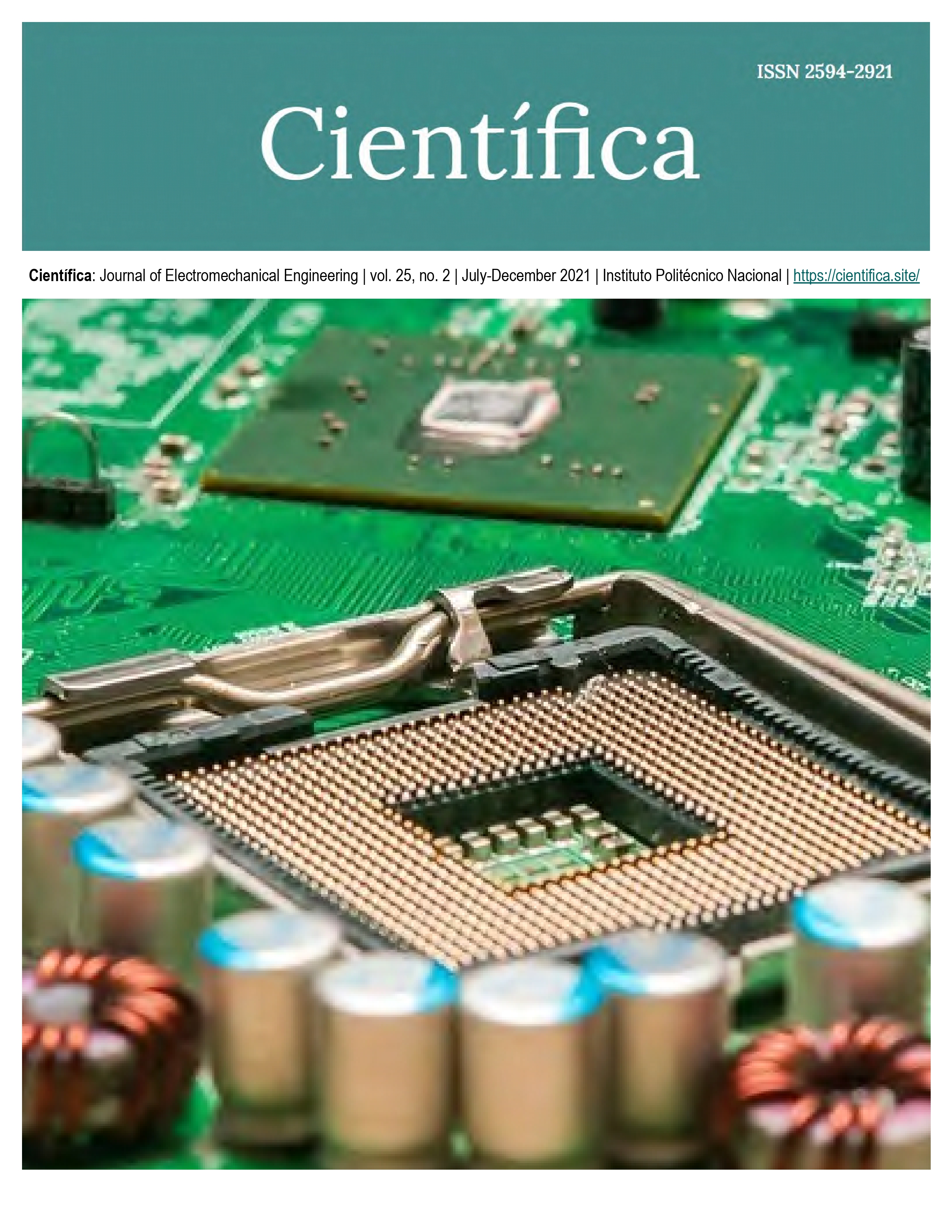Calculation of thermal and mechanical properties of crystalline CNTs (C-CNTs) and low crystallinity (LC-CNTs) by study the phonon dispersion
DOI:
https://doi.org/10.46842/ipn.cien.v25n2a02Keywords:
carbon nanotubes, electrostriction, phonon density of states, opto-mechanical effectsAbstract
The importance of studying carbon nanotubes (CNTs) from a crystallinity perspective is of utmost importance since their properties are highly modified depending on their atomic distribution. This work describes the calculation of thermal and mechanical properties of crystalline CNTs (C-CNTs) and low crystallinity (LC-CNTs) by study the phonon dispersion. The phonon band structure and phonon density of states were obtained using computer software (QuantumATK) and considering CNTs of the same morphological dimensions. The difference in the dispersion of phonons between the materials was decisive in the thermal and mechanical properties. Even though the heat capacity is comparable in both CNTs, a difference of 1 order of magnitude was observed for the thermal conductivity. Likewise, the Young modulus was computed in 5.4 MPa for C-CNTs and in 73.6 MPa for LC-CNTs. These differences are attributed to the values of the speeds of sound in the materials. On the other hand, CNTs have a large aspect ratio and therefore have highly molecular polarizability. This property makes it an attractive material for modulating mechanical properties through the electrostriction effect. The change in density and Young modulus were computed considering a light source with an irradiance between 0.1 to 1.0 GW/cm2, based on the linear and non-linear optical properties of CNTs from previous investigations. The results approximate the thermal and mechanical properties of C-CNTs and/or LC-CNTs by analyzing the fundamental atomic vibration modes.
References
Z. Yang, J. Tian, Z. Yin, C. Cui, W. Quian, F. Wei, “Carbon nanotube- and graphene-based nanomaterials and applications in high-voltage supercapacitor: A review,” Carbon, vol. 141, pp. 467-480, 2019, doi: https://doi.org/10.1016/j.carbon.2018.10.010
Z. Li, B. Bai, C. Li, Q. Dai, “Efficient photo-thermionic emission from carbon nanotube arrays,” Carbon, vol. 96, pp. 641-646, 2016, doi: https://doi.org/10.1016/j.carbon.2015.09.074
J. García-Merino, E. Jímenez-Marín, C. Mercado-Zúñiga, M. Trejo-Valdez, J. Vargas-García, C. Torres-Torres, “Quantum and bistable magneto-conductive signatures in multiwall carbon nanotubes decorated with bimetallic Ni and Pt nanoparticles driven by phonons,” OSA Continuum, vol. 2, no. 4, pp. 1285-1295, 2019, doi: https://doi.org/10.1364/OSAC.2.001285
T. Han, A. Nag, S. Mukhopadhyay, Y. Xu, “Carbon nanotubes and its gas-sensing applications: A review,” Sens. Actuators, A, vol. 291, pp. 107-143, 2019, doi: https://doi.org/10.1016/j.sna.2019.03.053
G. Cao, X. Chen, “The effects of chirality and boundary conditions on the mechanical properties of single-walled carbon nanotubes,” Int. J. Solids Struct., vol. 44, no. 44, pp. 5447-5465, 2007, doi: https://doi.org/10.1016/j.ijsolstr.2007.01.005
J. Liang, Y. Wang, Y. Huang, Y. Ma, Z. Liu, J. Cai, C. Zhang, H. Gao, Y. Chen, “Electromagnetic interference shielding of graphene/epoxy composites,” Carbon, vol. 47, pp. 922-925, 2009, doi: https://doi.org/10.1016/j.carbon.2008.12.038
K. Bergemann, F. Léonard, “Giga-gain at room temperature in functionalized carbon nanotube phototransistors based on a nonequilibrium mechanism,” ACS Nano, vol. 14, no. 8, pp. 10421–10427, 2020, doi: https://doi.org/10.1021/acsnano.0c04296
J. Hone, “Phonons and Thermal Properties of Carbon Nanotubes,” in Carbon Nanotubes. Topics in Applied Physics, Berlin: Springer, 2001, pp. 273-286, doi: https://doi.org/10.1007/3-540-39947-X_11
F. Vasko, O. Raichev, Quantum kinetic theory and applications: Electrons, photons, phonons, New York, USA: Springer, 2005, doi: https://doi.org/10.1007/0-387-28041-3
S. Piscanec, M. Lazzeri, F. Mauri, A. Ferrari, “Optical phonons of graphene and nanotubes,” Eur. Phys. J. Special Topics, vol. 148, p. 159–170, 2007, doi: https://doi.org/10.1140/epjst/e2007-00236-2
N. F. Mott, “ Conduction in non-crystalline materials,” Philos. Mag., vol. 19, pp. 835-852, 1969, doi: https://doi.org/10.1080/14786436908216338
S. Mu, R. Olsen, B. Dutta, L. Lindsay, G. Samolyuk, T. Berlijn, E. Specht, J. Jin, H. Bei, T. Hickel, B. Larson, G. Stocks, “Unfolding the complexity of phonon quasi-particle physics in disordered materials,” npj Comput. Mater., vol. 6, no.4, 2020, doi: https://doi.org/10.1038/s41524-020-0271-3
S. Smidstrup, T. Markussen, P. Vancraeyveld, J. Wellendorff, J. Schneider, T. Gunst, B. Verstichel, D. Stradi, P. Khomyakov, U. Vej-Hansen, “QuantumATK: An integrated platform of electronic and atomic-scale modelling tools,” J. Phys.: Condens. Matter, vol. 32, no. 015901, 2020, doi: https://doi.org/10.1088/1361-648X/ab4007
J. Schneider, J. Hamaekers, S. T. Chill, S. Smidstrup, J. Bulin, R. Thesen, A. Blom, K. Stokbro, “ATK-ForceField: a new generation molecular dynamics software package,” Modelling Simul. Mater. Sci. Eng., vol. 25, no. 085007, 2017, doi: https://doi.org/10.1088/1361-651X/aa8ff0
J. Tersoff, “Modeling solid-state chemistry: Interatomic potentials for multicomponent systems,” Phys. Rev. B, vol. 39, pp. 5566-5568, 1989, doi: https://doi.org/10.1103/PhysRevB.39.5566
J. García-Merino, L. Fernández-Izquierdo, R. Villarroel, S. Hevia, “Photo-thermionic emission and photocurrent dynamics in low crystallinity carbon nanotubes,” J. Materiomics, vol. 7, no. 2, pp. 271-280, 2021, doi: https://doi.org/10.1016/j.jmat.2020.10.002
J.P. Hague, “Determining the phonon density of states from specific heat measurements via maximum entropy methods,” J. Phys.: Condens. Matter., vol. 17, pp. 2397-2405, 2005.
T. M. Tritt, Thermal conductivity: Theory, properties and applications, New York, USA: Kluwer Academic / Plenum Publishers, 2004.
C. Torres-Torres, C. Mercado-Zúñiga, C. Martínez-González, H. Martínez-Gutiérrez, N. Rebollo, M. Trejo-Valdez, J. Vargas-García, R. Torres-Martínez, “Optical Kerr effect exhibited by carbon nanotubes and carbon/metal nanohybrid materials,” Physica E, vol. 73, pp. 156-162, 2015, doi: https://doi.org/10.1016/j.physe.2015.05.035
O. Dyatlova, C. Koehler, P. Vogel, E. Malic, R. Jain, K. Tvrdy, M. Strano, A. Knorr, U. Woggon, “Relaxation dynamics of carbon nanotubes of enriched chiralities,” Phys. Rev. B, vol. 90, no. 155402, 2014, doi: https://doi.org/10.1103/PhysRevB.90.155402
K. Gharbavi, H. Badehian, “Optical spectra of zigzag carbon nanotubes,” Optik, vol. 127, no. 17, pp. 6952-6960, 2016, doi: https://doi.org/10.1016/j.ijleo.2016.05.034
P. Slade, Electrical contacts: principles and applications, New York, USA: Marcel Dekker, Inc, 1999.
A. Brandao-Silva, R. Lima, C. Fantini, A. Jesus-Silva, M. Alencar, J. Hickmann, R. Jain, M. Strano, E. Fonseca, “Near infrared nonlinear refractive index dispersion of metallic and semiconducting single-wall carbon nanotube colloids,” Carbon, vol. 77, pp. 939-946, 2014, doi: https://doi.org/10.1016/j.carbon.2014.06.008
Downloads
Published
Issue
Section
License
Copyright (c) 2021 Instituto Politecnico Nacional

This work is licensed under a Creative Commons Attribution-NonCommercial-ShareAlike 4.0 International License.

